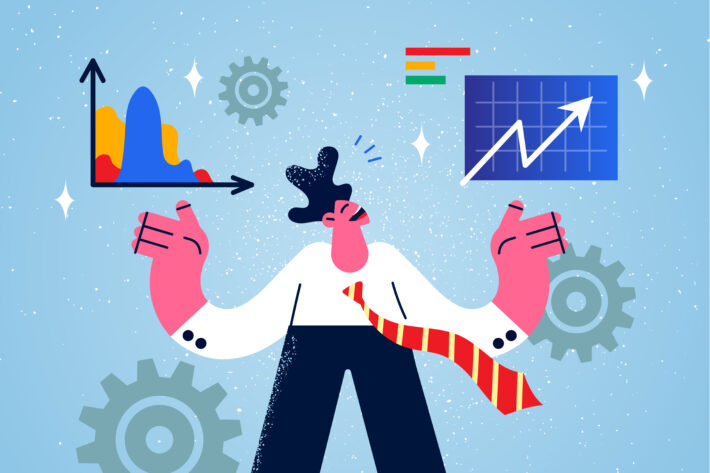What is HRIS, and How Does It Make Core HR Functions Easier?

Effective HR management is virtually impossible for sizable companies without a Human Resources Information System (HRIS) in today’s landscape. HRIS transformed the way businesses manage their most valuable asset: human capital, by consolidating and automating critical HR tasks on a centralized, user-friendly platform. If you’re curious about HRIS and its significance for organizations, you’re in the perfect spot to begin exploring.
What is meant by HRIS?
HRIS stands for Human Resources Information System. It is a HR software solution or suite of applications used by organizations to manage and automate various human resources processes and data.
An HRIS acts as a centralized database for all employee-related data and automates many routine HR tasks, improving efficiency, accuracy, and compliance with regulations. It provides reports and analytics to support strategic decision-making related to human capital management.
What are the Features of an HRIS system?
Human Resources Information System typically includes a range of features and modules to support various HR processes and functions. Here are some common features the system offers:
| Feature | Description |
| Employee Database | A centralized repository for storing and managing employee data, including personal information, job details, employment history, and other relevant records. |
| Payroll Management | Handles payroll processing, including calculating salaries, taxes, deductions, and generating payslips or direct deposit transactions. |
| Time and Attendance Tracking | Allows employees to clock in and out, track work hours, overtime, and manage leave requests and approvals. |
| Recruitment and Applicant Tracking | Supports job posting, resume management, applicant screening, interview scheduling, and onboarding of new hires. |
| Performance Management | Facilitates goal setting, performance reviews, feedback, and appraisal processes for employees. |
| Training and Development | Manages training programs, course enrollment, certifications, and tracks employee skills and competencies. |
| Benefits Administration | Handles enrollment, management, and claims processing for employee benefits such as health insurance, retirement plans, and other perks. |
| Self-Service Portals | Provides employees and managers with access to update personal information, view payslips, request leaves, and perform other tasks without involving HR staff. |
| Reporting and Analytics | Generates reports and dashboards on various HR metrics, such as headcount, turnover, compensation, and workforce demographics, enabling data-driven decision-making. |
| Compliance and Policy Management | Enforces policies, maintains audit trails, and ensures compliance with labor laws, regulations, and internal company rules. |
| Workflow and Approval Processes | Automates and streamlines workflows for tasks like leave requests, performance reviews, and other approval processes. |
| Integration | Ability to integrate with other business systems like accounting, payroll, or enterprise resource planning (ERP) software for seamless data exchange. |
What are the Different Types of HRIS Systems?
There are different types of HRIS (Human Resource Information Systems) tailored to meet various organizational needs. The main types of HRIS systems include:
1. Operational HRIS:
- Focuses on reporting employee data, internal talent management, and performance management.
- Helps with tasks like workforce trend analysis, talent assessment, and performance monitoring.
- Ideal for organizations prioritizing employee development and retention.
2. Tactical HRIS:
- Aids in informed decision-making regarding recruitment, onboarding, compliance, benefits, and training.
- Offers support for decisions related to workforce allocation and management.
- Suitable for companies looking to enhance recruitment processes and employee compensation plans.
3. Strategic HRIS:
- Concentrates on supporting labor negotiations, workforce planning, and specialized HR software.
- Focuses on long-term strategic planning, workforce optimization, and market expansion.
- Helps organizations gain insights into labor resources and strategic workforce planning.
4. Comprehensive HRIS:
- Integrates various HR functions like employee data management, talent management, performance appraisals, and analytics.
- Provides a holistic approach to managing human resources efficiently.
- Offers advanced reporting and analytics functionalities for data-driven decision-making.
5. Limited-function HRIS:
- Offers basic HR functions tailored to specific needs with limited features.
- Ideal for companies with narrow HR requirements and limited budgets.
- Can be a starting point for organizations looking to upgrade to more comprehensive HRIS systems in the future.
Each type of HRIS system caters to different organizational priorities, scales of operation, team sizes, growth phases, and work models. Choosing the right system depends on specific needs such as employee data management, talent optimization, compliance requirements, strategic planning, or budget constraints.
Which areas can HR professionals benefit from an HRIS?
HR professionals can benefit from a Human Resource Information System in several key areas:
1. Employee Data Management:
HRIS provides a centralized database for storing and managing employee data, including personal information, employment history, job details, and more. This ensures accurate and up-to-date employee records, eliminating the need for manual file management and reducing errors.
2. Payroll and Compensation Management:
HRIS systems typically include payroll modules that automate calculations for salaries, taxes, deductions, and benefit contributions. HR professionals can easily manage compensation structures, bonuses, and salary reviews within the system.
3. Recruitment and Talent Acquisition:
HRIS solutions often have applicant tracking systems (ATS) that streamline the recruitment process, from job postings to candidate screening and onboarding. HR professionals can efficiently manage job requisitions, track applicants, schedule interviews, and maintain a talent pipeline.
4. Performance Management:
HRIS modules enable HR professionals to manage performance review cycles, goal setting, feedback, and appraisals for employees. They can track employee development plans, training needs, and succession planning initiatives.
5. Benefits Administration:
HR professionals can use HRIS to manage employee benefit plans, enrollment, claim processing, and compliance with regulations. Self-service portals allow employees to access and update their benefit information.
6. Time and Attendance Tracking:
HRIS systems often include time and attendance modules that enable HR professionals to track employee work hours, overtime, and leave requests. This data can be integrated with payroll and compliance processes.
7. Reporting and Analytics:
HRIS provides comprehensive reporting and analytics capabilities, allowing HR professionals to generate reports on various HR metrics, such as headcount, turnover, compensation, and workforce demographics. These insights support data-driven decision-making and strategic workforce planning.
8. Compliance and Policy Management:
HRIS systems help HR professionals ensure compliance with labor laws, regulations, and company policies by enforcing rules and maintaining audit trails. They can store and distribute employee handbooks, policies, and procedures electronically.
9. Self-Service and Employee Engagement:
Self-service portals in HRIS empower employees to access and update their personal information, request leaves, view payslips, and more, reducing the administrative burden on HR staff.
By leveraging the various features and capabilities of an HRIS, HR professionals can streamline their processes, improve data management, enhance decision-making, and ultimately contribute to the overall success and growth of the organization.



